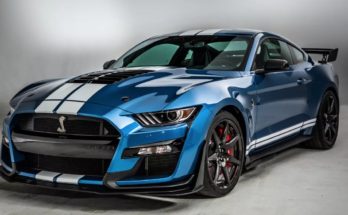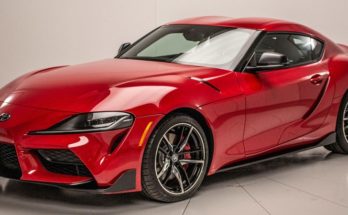It’s no secret that I love classic cars. I love the odd, unique, lesser known models just as much as I do the most popular vehicles. I hadn’t, however, spent much time learning about Hudson’s offerings until recently, and I’ve fallen in love with the Hudson Pacemaker. Not only does it have low, classic lines, it’s also a convertible. It has become a rare sighting these days, but these early 1950’s vehicles are still being sought after, with one making it all the way to Sotheby’s a few years ago.
The Pacemaker is smaller than the rest of its family members (like the Hornet and Wasp), and was the lowest in overall height of any car when it came out in 1950. While it was smaller, it was definitely also sportier, able to go from business to sleek luxury in a matter of minutes. With its diminutive height, strong curves, and state-of-the-art look, the Pacemaker is still an impressive piece of automobile history, and gorgeous to boot.
Available as several different types of coupes as well as a four-door, and several of them were convertibles. There were also two packages available, the standard “500” package and the Deluxe, which came with a higher quality of interior materials. The way the Pacemaker was built also insured that it handled better than other cars in its range, partly due to its “step down” design, with part of its body covering the back wheels.
Standard equipment included a 3-speed manual transmission and a 6-cylinder engine, although there were a few different transmission options should the owner desire an automatic transmission. There was even a vacuum operated clutch possibility, though it was quite complicated. It did allow the driver to choose between manual and automatic transmission styles. It had a wheelbase of 119 inches, an an overall length of just over 201 inches. It weighed 3,305 lbs. Later in the Pacemaker’s evolution, the “Deluxe” package became known as the Hudson Wasp, similar to the Commodore’s upgraded package, known as the Hudson Hornet. Later this would turn into the Wasp and Super Wasp. Collectors like the Hornet and Wasp packages, but if you’re looking to start more simply and for less of an upfront cost, you may want to try and find a regular Pacemaker from the early 1950’s and upgrade afterward.
The price range for a Pacemaker varies widely these days, depending on the mileage, upkeep, restoration, and overall condition of the vehicle. The Pacemaker put up at Sotheby’s sold for over $60k, but there are others that have been restored and sold in the U.S. for around $20k. Of course, if you’d rather look them over instead of purchasing one, you can find them touring car shows around the country. Look for the specialty versions, either the Hollywood Hardtop or the Brougham Convertible.
While there isn’t as much detailed information about the Hudson Pacemaker itself, you can see the Wasp and Hornet versions in pop culture, such as Doc Hudson, a character in the Pixar movie “Cars”. While the Pacemaker and its variants may not be traveling the open road as much anymore, they’re still beloved by the American public, and likely to last in the lexicon for quite some time.


